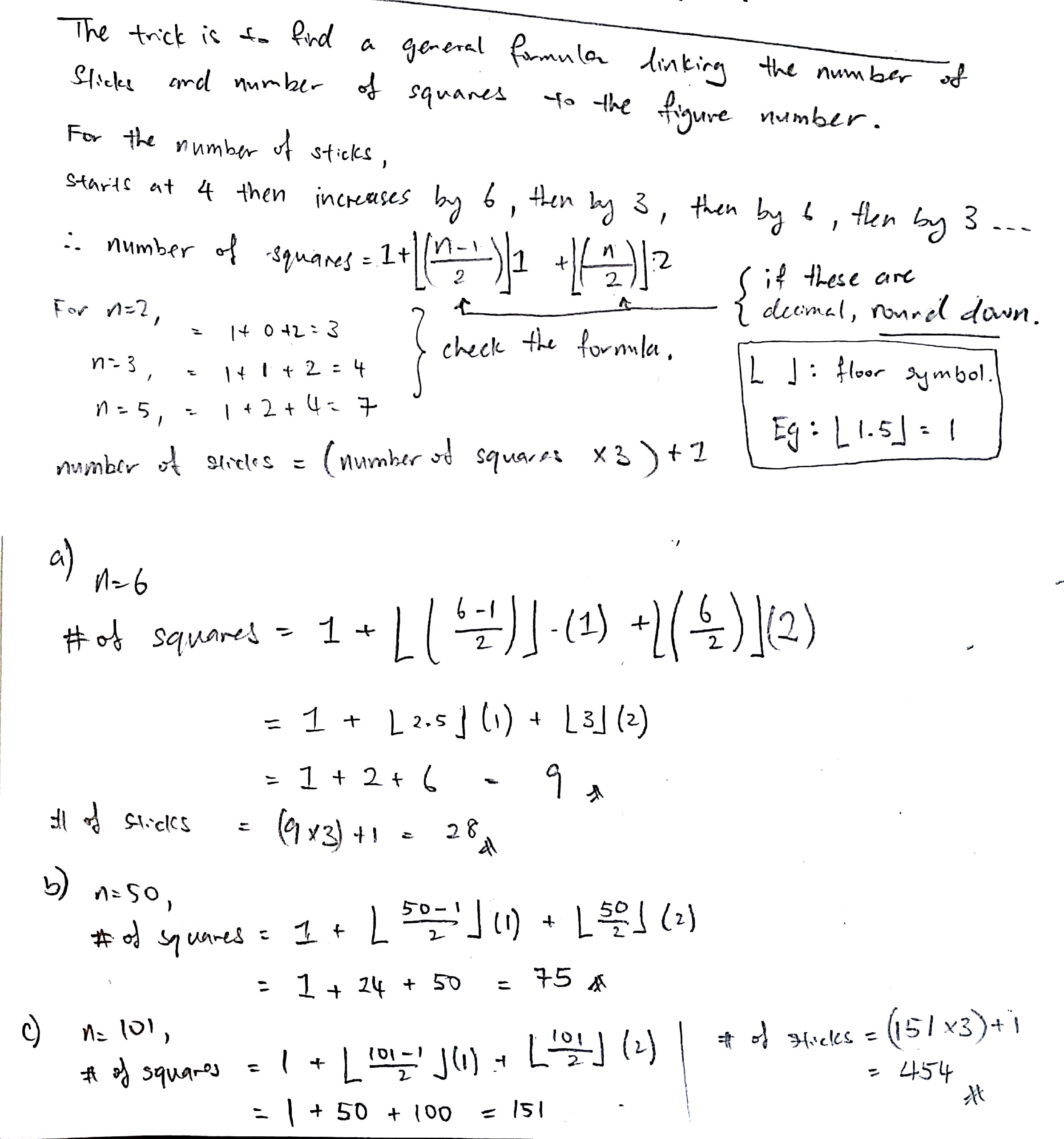Marcus Neale Goh Zheng Jie's answer to Cshjwrk's Primary 6 Maths Singapore question.
done
{{ upvoteCount }} Upvotes
clear
{{ downvoteCount * -1 }} Downvotes
This question is really not easy. The key to solving this kind of problems is to find a general formula that links the figure number (n) with the other variables. For this problem, there needs to be a mechanism that counts what happens to the number of squares on an odd figure number and an even figure number. I have decided to use what is called a floor function which is simply rounding down a decimal to the nearest integer. After which the number of sticks can be easily related to the number of squares. I hope this is helpful and makes sense. I look forward to seeing other proposed solutions by other tutors that may be less complicated than this one. Feel free to clarify or let me know if I have made any errors.
Date Posted:
4 years ago
Thanks alot for the effort in showing the solution, appreciated it.
I made an error. The second sentence of my solution should be: "For the number of squares, Starts at 1, then increases by 2, then by 1, then by 2, and so on..."
Ok noted thanks
You're most welcome
Interesting solution that makes use of a unified equation for both odd and even figure numbers!




